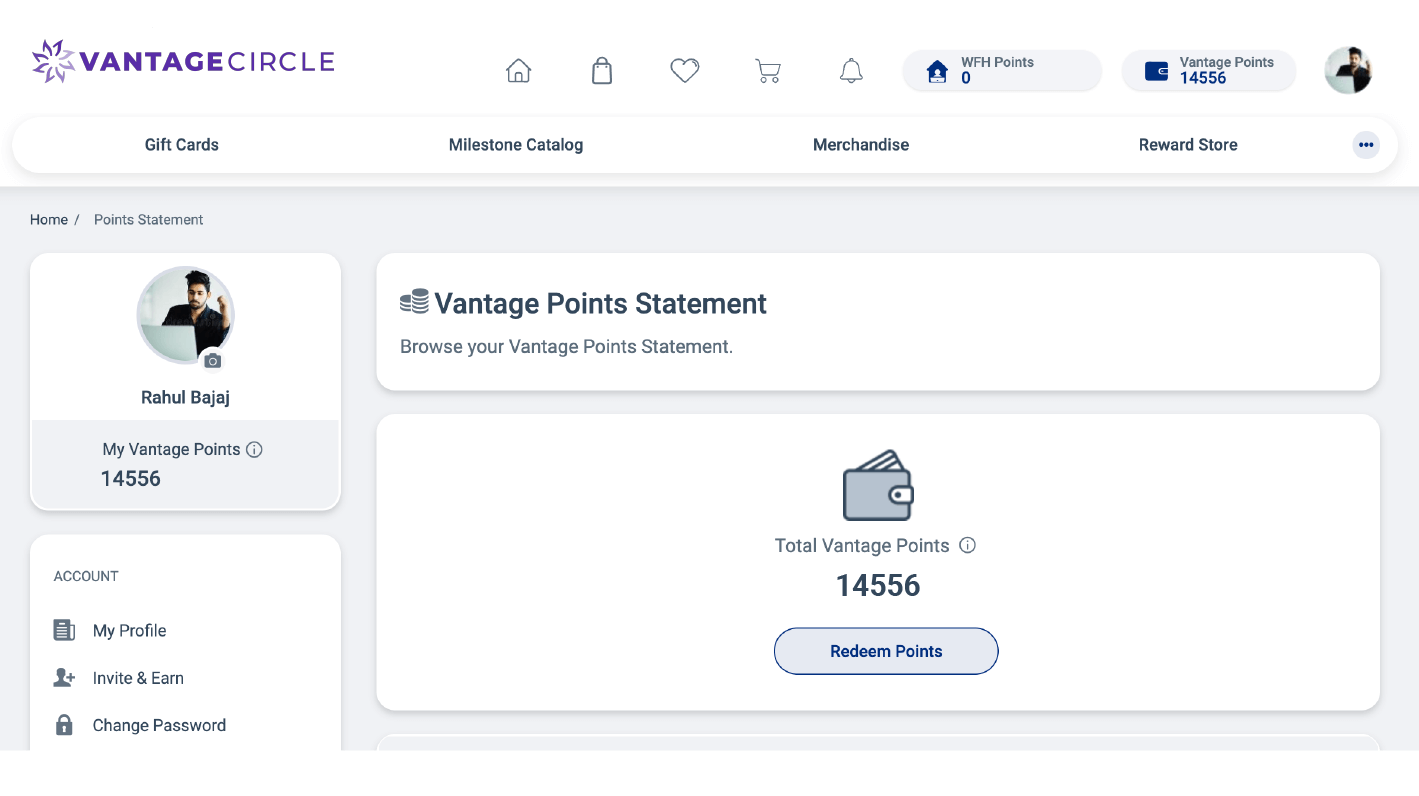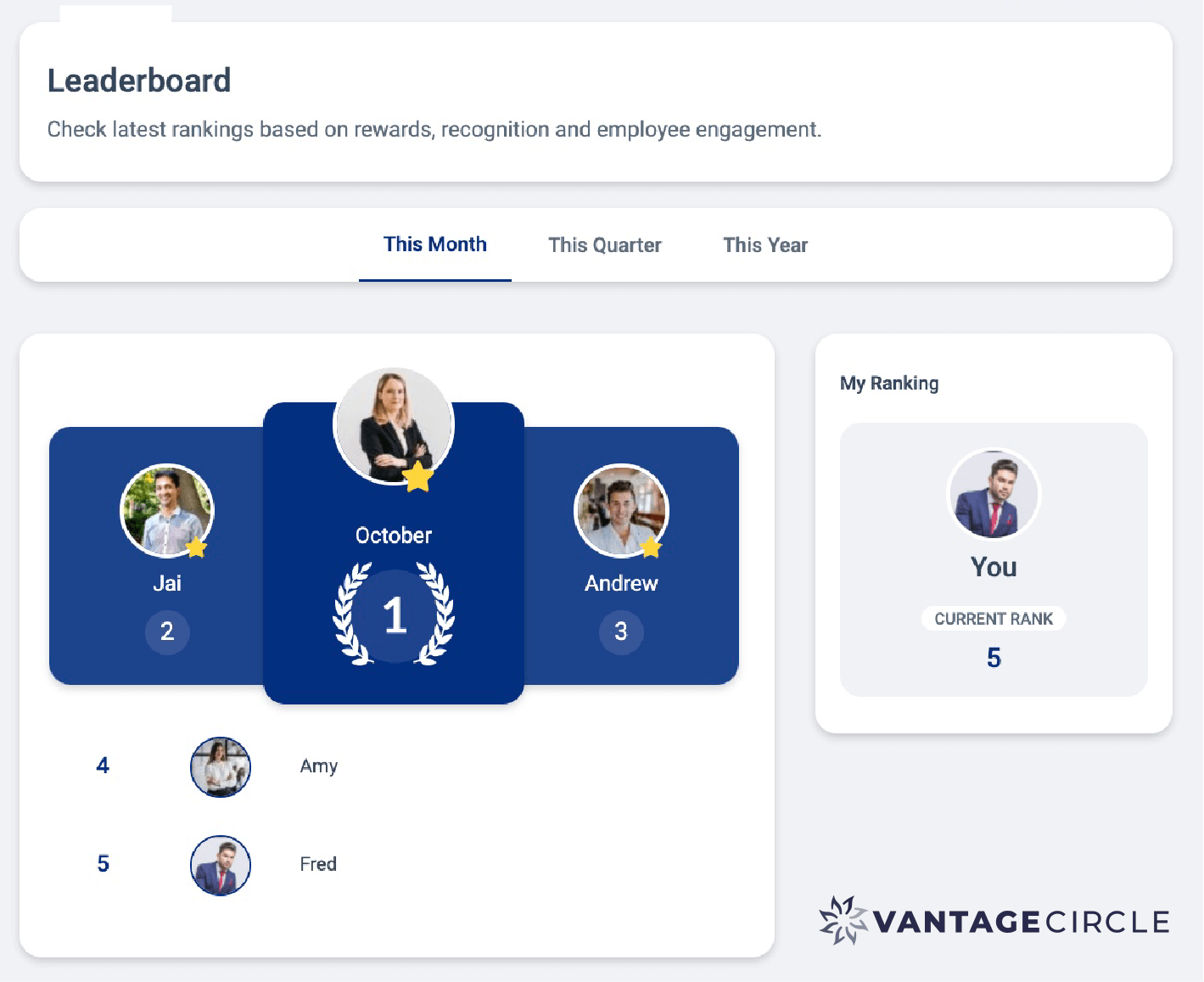Recognizing Remote Employees: How to Ensure Consistent, Inclusive Recognition for a Distributed Workforce

A Global Employee Recognition and Wellness Platform
The rise of remote and hybrid work has been reshaping the modern workforce, with teams now operating across multiple locations and time zones.
While the shift undoubtedly offers flexibility, it also brings in unique challenges, particularly in catering to the needs of employee recognition.
According to research, 82% of remote workers feel unrecognized by their employers.
As you know, recognition is a crucial driver of employee engagement. However, spontaneous, in-person appreciation, a common practice in traditional workplaces, is challenging to apply in remote settings.
The lack of consistent recognition can push remote employees to feel disconnected, ultimately resulting in disengagement, impacting employee morale, productivity, and retention.
Despite the difficulties, we cannot back down and instead come up with strategies to overcome them. The need of the hour is to prioritize recognition for remote employees.
But how can we ensure a consistent and inclusive recognition for a distributed workforce?
Why is Recognizing Remote Employees So Important
Irrespective of location and time zone differences, remote employees are part and parcel of your organization, and their inclusion in the recognition process is as important as that of the office employees.
If there are organizations successfully operating remotely, why can’t other organizations also make remote employees feel a part of the organization and drive success?
Like office employees, employee recognition also directly impacts engagement, performance, and retention for remote teams. Their contribution is just as vital, and when they feel appreciated, their productivity levels soar, and they gain the motivation to go beyond their roles.
As a result, they likely remain loyal to their organization. This is justified by a Gallup research that found well-recognized employees are 45% less likely to change organizations after two years.
In remote settings, the absence of face-to-face interactions often makes employees miss out on informal recognition that frequently happens in office spaces. Without such recognition, employees feel undervalued and pushed towards isolation.
It becomes natural for them to slide into disengagement, which manifests in lower productivity, higher absenteeism, and turnover.
A Forbes study reveals that 66% of employees would quit their jobs if they didn't feel appreciated.
The bottom line is that remote workers also require structured virtual employee recognition programs for cultivating a motivated and engaged team.
Designing Scalable Virtual Recognition Programs with Examples

To make remote employees inclusive in the recognition process, you need to strengthen your virtual employee recognition program. This is because research indicates that virtual recognition programs can lead to a 30% increase in employee engagement levels.
To ensure this, designing a scalable program requires your immediate attention.
1. Focus on Efficiency and Impact
When designing recognition programs, focus on making your program efficient and impactful. This will assist you in scaling across remote and hybrid teams while maintaining inclusivity and meaningful engagement.
Here are certain factors that require your consideration and execution:
-
Digital Platforms: Utilizing employee recognition platforms like Vantage Recognition assists organizations in streamlining recognition efforts. The platform allows real-time shout-outs, peer-to-peer recognition, and manager-driven awards, making every accomplishment count, whether big or small.
-
Personalization: Prioritize tailoring recognition to individual preferences. Employees have varied preferences, where some prefer public acknowledgments, others fancy a more private “thank you”. Personalizing the recognition experience makes employees feel genuinely valued.
-
Gamified Rewards Systems: Introducing gamification elements, such as point-based rewards, digital badges, and leaderboards, makes recognition fun and engaging. Gamification fosters a sense of friendly and healthy competition that can keep remote employees motivated, encouraging them to continue participating.

Source: Vantage Recognition

Source: Vantage Recognition
-
Regularity: Recognition must not be reduced to a one-time practice. It should become a consistent practice that weaves into the day-to-day routine of the organization. And organizations should keep track of that and ensure its regularity.
-
Virtual Celebrations: Hosting virtual team-building activites, milestone celebrations, and achievements through video calls can keep remote teams consistently connected and engaged. Recognizing personal milestones like birthdays or work anniversaries via video calls fosters inclusion.
-
Incentives: Confer meaningful rewards through gift cards, experience-based incentives, or even charity donations in employees’ names. This demonstrates the tangible value of recognition beyond verbal acknowledgment.
2. Ensuring Inclusivity in Recognition
Crafting an inclusive employee recognition program guarantees that every employee, regardless of location, receives acknowledgment.
Remote employees also deserve the same recognition opportunities as their office counterparts.
- Avoiding Bias: Keep all biases at bay. Recognition should be based on merit and achievements rather than proximity to office space or leadership.
- Inclusivity: Since remote teams represent diverse backgrounds and work across different time zones, recognition programs need to be designed to accommodate their diversity by offering flexibility in recognition delivery.
- Avoiding Exclusion: Prevent feelings of exclusion and disconnection among remote employees by ensuring recognition efforts extend beyond in-office staff.
Provide remote employees with equal opportunities for recognition and include them in virtual celebrations.
3. Technology and Tools to Support Remote Employee Recognition

In remote settings, technology plays a vital role in enabling effective recognition. Optimizing your technology and tools is therefore essential to support these efforts.
-
Recognition Platforms: Tools like Vantage Recognition offer structure to the recognition process, allowing employees to exchange recognition among peers and managers. The platform also enables tracking and reporting the frequency and type of recognition given.
-
Communication Tools: Platforms such as Microsoft Teams, Slack, or Zoom can be utilized for continuous communication and spontaneous recognition. Teams, particularly, can create dedicated channels for public praise or set up virtual shout-out sessions during team meetings.
-
Survey Tools: Employee engagement surveys help organizations collect feedback about how appreciated and valued employees feel. Survey tools like Vantage Pulse enable managers to assess recognition levels and identify areas for improvement.
-
Performance Management Systems: Leveraging tools to monitor employee performance, milestones, and achievements ensures that recognition is data-driven. These systems highlight employees’ contributions and celebrate smaller wins that may otherwise go unnoticed.
4. Incorporating Peer-to-Peer Recognition in a Remote Setting
Peer-to-peer recognition holds the key to building and strengthening collaboration among team members. In a remote setting, employees tend to miss out on the casual interactions that are essential for fostering bonds in an office setup. This is where peer recognition helps bridge that gap.

Source: Vantage Recognition
-
Recognition Systems: Organizations should establish recognition systems that give employees the liberty to nominate or recognize each other for their contributions and efforts. This builds a culture of appreciation that extends beyond managers. A study suggests that close to 64% of employees consider employee appreciation even more significant in a remote work environment.
-
Dedicated Channels: Platforms like Slack or Teams enable creating dedicated channels for employees to share shout-outs or appreciation messages. This strengthens camaraderie among employees, making everyone see the value that colleagues bring to the team.
How can Managers be the Key Drivers of Virtual Recognition

Since managers have been critical in leading teams and driving recognition in the office setting, they can undoubtedly become key players in driving recognition in remote environments.
They can identify both visible and less obvious contributions and develop ways to deliver personalized recognition.
-
Equipping Managers: Equip managers with the necessary tools to recognize contributions. Also, training managers to offer meaningful feedback can significantly influence engagement levels.
-
Personalized Recognition: Give managers access to recognition platforms that enable them to deliver personalized recognition on a large scale.
For instance, sending a simple “thank you” via email, a private message, or a virtual shout-out goes a long way in making an employee feel valued. -
One-on-Ones: Managers ought to hold regular one-on-one meetings to discuss both professional and personal achievements. This will ensure that recognition becomes a continuous process and not just an afterthought.
How Do You Overcome Remote Recognition Challenges
Challenges are inevitable in any process, and remote recognition is no exception. But with the right strategies in place, you can address them effectively:
-
Time Zone Flexibility: Implementing asynchronous recognition gives employees working across different time zones the flexibility to participate in recognition.
Tools that enable scheduled or delayed recognition make employees feel included. -
Virtual Tools for Team Bonding: Host virtual team-building activities to keep remote employees connected and engaged. Online team games, virtual coffee breaks, and collaborative brainstorming sessions give way to building and sustaining team bonds.
-
Preventing Recognition Fatigue: While recognition is key to engagement, excessive recognition can lead to burnout. The key is to balance recognition with other initiatives like wellness programs, informal chats, and virtual learning.
This approach keeps recognition meaningful, avoids overwhelming feelings, and ensures a well-rounded, fresh employee engagement strategy.
Measuring the Impact of Remote Employee Recognition

To gauge the effectiveness of recognition programs, it’s essential to keep track of their impact. Consider gathering valuable insights from metrics such as employee engagement, retention, and satisfaction surveys.
-
Surveys & Feedback: Conduct regular surveys to assess how valued remote employees feel about the recognition process. This sheds light on the possible gaps and areas of improvement.
-
Recognition Analytics: Leverage data extracted from recognition platforms to track the quality and frequency of recognition. These insights help ensure that recognition is balanced and effectively distributed across teams.
-
Retention Metrics: Analyze turnover rates and retention data to grasp the long-term impact of recognition on employee loyalty and engagement.
Conclusion: Building a Culture of Recognition that Transcends Physical Distance
Recognition is more than just a mere gesture; it is a strategy to drive employee engagement and performance. This applies not just to office employees but also to remote employees.
As discussed above, implementing scalable, inclusive, and personalized recognition programs helps organizations foster a connected, motivated, and high-performing workforce. The key is to integrate recognition into a regular practice where technology can help bridge the physical distance, ensuring that no one is left behind.
The future of work lies in remote recognition, where leaders must prioritize accommodating remote employees in recognition efforts, building a thriving workforce, regardless of location.















